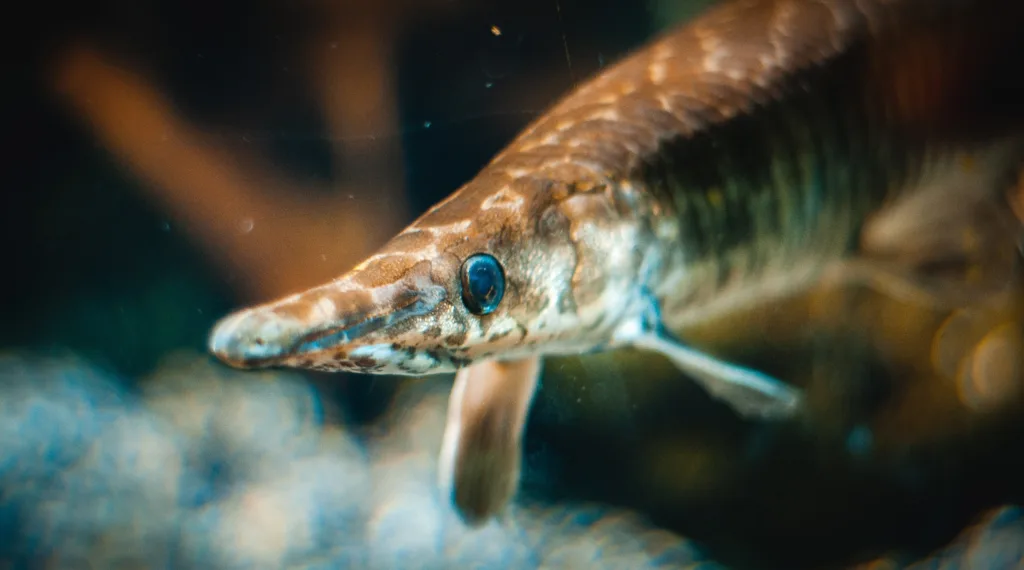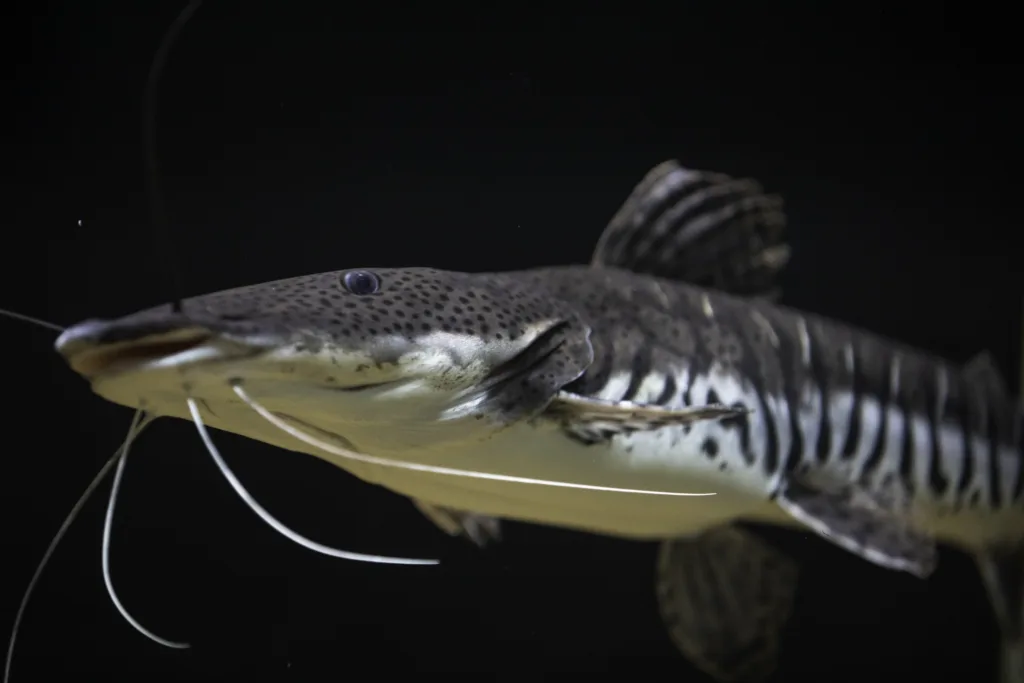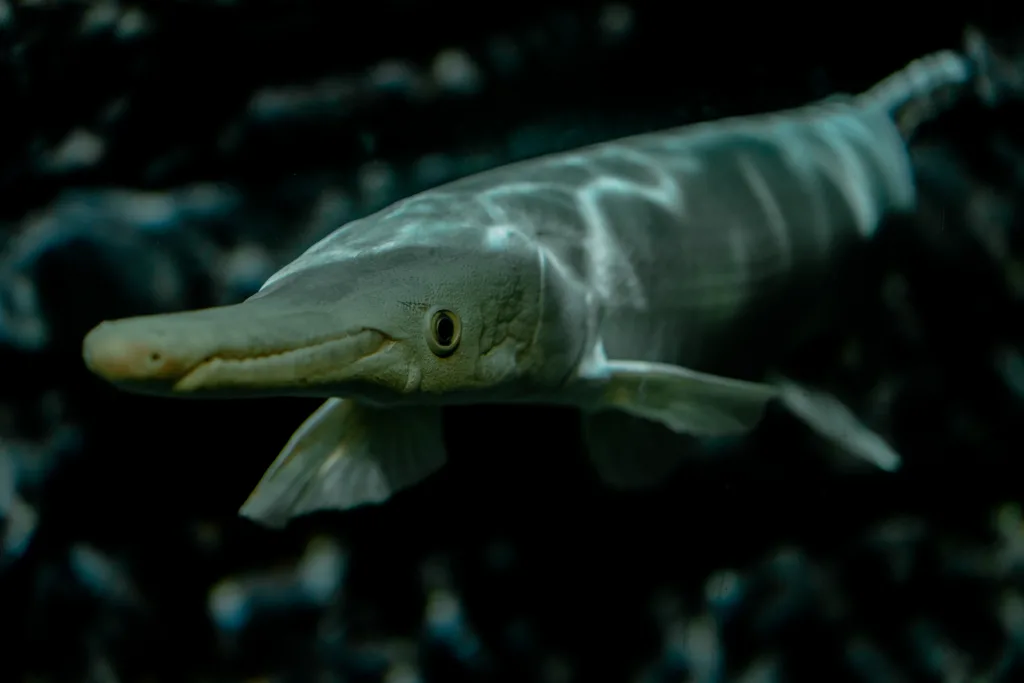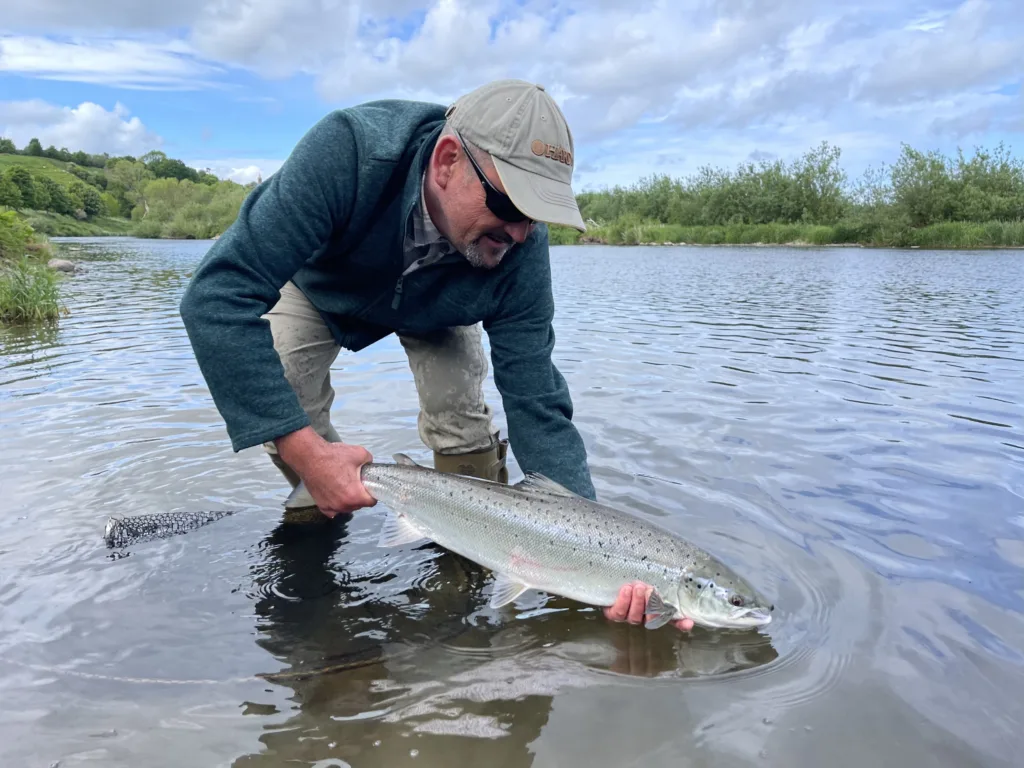Sturgeon are a group of prehistoric fish that have been around for millions of years. They are known for their large size and impressive lifespan. In this article, we will discuss the size and life cycle of sturgeon, as well as their feeding habits.
Firstly, sturgeon can grow quite large, typically ranging from 2 to 3.5 meters (7 to 12 feet) in length. In fact, the largest sturgeon on record was a beluga female captured in the Volga Delta in 1827, measuring 7.2 meters (23 feet 7 inches) long and weighing 1,571 kg (3,463 pounds). Fishermen in British Columbia, Canada, recently caught an enormous white sturgeon that is over ten feet long and estimated to be at least 100 years old.
Sturgeon can live to be up to 100 years old, but in the Kootenai watershed they are not as long-lived. Females have been observed to mature as early as age 22, with males sometimes maturing at 16. Females are reported to spawn once every two to 11 years.
White sturgeon are bottom feeders. They primarily eat small fish, crustaceans, and mollusks. They have a unique way of feeding, which involves sucking up food from the bottom of the river or lake. This is made posible by their long, pointed snout and the presence of sensory barbels on their underside.
Sturgeon are fascinating fish that are known for their impressive size and longevity. They can grow to be over 10 feet long and can live up to 100 years. They are bottom feeders that primarily eat small fish, crustaceans, and mollusks. If you ever have the chance to see a sturgeon in person, take the opportunity to witness one of the oldest living creatures on the planet.
The Record-Breaking Catch of the Biggest Sturgeon Ever
The biggest sturgeon ever caught was a female beluga sturgeon. This particular sturgeon was captured in the Volga Delta in 1827, and it measured 7.2 meters (23 feet 7 inches) in length, and it weighed a whopping 1,571 kilograms (3,463 pounds).
It’s worth noting that not all sturgeon species grow to be this large. While many sturgeon species can grow to be qite large, with lengths typically ranging from 2-3.5 meters (7-12 feet), the beluga sturgeon is known for being one of the largest.
Sturgeon are fascinating creatures that have been around for millions of years. They’re known for their unique appearance, with their long, slender bodies covered in bony plates called scutes. Sturgeon are also known for their long lifespans, with some species living to be over 100 years old.
In addition to their impressive size and longevity, sturgeon are also valued for their meat and eggs. Sturgeon eggs, which are commonly referred to as caviar, are considered a delicacy in many parts of the world. However, due to overfishing and habitat destruction, many sturgeon populations are now endangered or threatened.
The biggest sturgeon ever caught was a female beluga sturgeon that measured 7.2 meters (23 feet 7 inches) in length and weighed 1,571 kilograms (3,463 pounds). While sturgeon are impressive creatures, many populations are now in danger due to overfishing and habitat destruction.

Average Size of a 100-Year-Old Sturgeon
Sturgeon are knwn for their massive size and can live for over a century. The recent catch of a white sturgeon in British Columbia, Canada, estimated to be at least 100 years old, has sparked interest in just how big these creatures can get. So, how big is a 100 year old sturgeon?
The answer is that it can vary depending on the species of sturgeon, but they can grow to be incredibly large. White sturgeon, like the one caught in Canada, are known to grow up to 20 feet long and weigh over 1,500 pounds. Other species of sturgeon, such as the Beluga sturgeon, can grow even larger, reaching lengths of up to 30 feet and weighing over 3,000 pounds.
It’s important to note that sturgeon don’t typically grow at a consistent rate throughout their lives. Instead, they grow rapidly when young and then slow down as they age. This means that a 100 year old sturgeon could be much larger than a 50 year old sturgeon of the same species.
A 100 year old sturgeon can be massive, with some species reaching lengths of up to 30 feet and weighing over 3,000 pounds. The recent catch of a 10-foot-long white sturgeon in Canada is a testament to just how large these creatures can get.
Can Sturgeon Live for Over a Century?
Sturgeon are known for their long lifespan, with some species capable of living up to 100 years. However, it’s important to note that the lifespan of sturgeon can vary depending on the species and the environment they live in.
In the Kootenai watershed, sturgeon are not as long-lived as some other species. Females have been observed to mature as early as age 22, with males sometimes maturing at 16. While some sturgeon can live to be 100 years old, it’s unlikely that sturgeon in the Kootenai watershed will reach this age.
It’s also worth noting that sturgeon have a slow growth rate and can take several years to reach maturity. Females are reported to spawn once every two to 11 years, whih further contributes to the slow growth and low reproductive rate of sturgeon.
While sturgeon are known for their long lifespan, the specific length of their lifespan can vary depending on a range of factors, including species and environment.
Estimating the Age of a 700 Pound Sturgeon
Sturgeons are known to be one of the oldest fish species in the world, with some individuals living up to 150 years. When it comes to the age of a 700-pound sturgeon, it can be estimated that it is likely to be over a century old.
River Monster Adventures, a company that specializes in fishing trips, estimated that a 700-pound fish they caught was around 110 years old. However, determining the exact age of a sturgeon is not an easy task, as it requires analyzing the fish’s growth rings using scientific techniques.
Sturgeons are slow-growing fish that take many years to reach their full size. They can live for several decades and continue to grow throghout their lives. Therefore, it is not uncommon to find sturgeons that weigh several hundred pounds and are over 100 years old.
A 700-pound sturgeon is likely to be over 100 years old, but determining its exact age requires a scientific analysis of the fish’s growth rings.
The Edibility of Sturgeon Meat
Sturgeon meat is edible and is considered a delicacy in many parts of the world. Sturgeon meat has a refined flavor and a tender texture that makes it an excellent ingredient for various dishes. The most common ways of eating sturgeon meat are raw and cooked.
When eating sturgeon raw, it is often served as sashimi or sushi. The meat is sliced thinly and served with soy sauce, wasabi, and pickled ginger. The texture of the raw sturgeon meat is firm, with a slightly sweet and nutty flavor.
Cooked sturgeon meat is also delicious and can be prepared in various ways, such as grilling, baking, or boiling. When boiled, sturgeon meat becomes tender and can be used in stews or soups. Grilled or baked sturgeon meat has a smoky flavor and crispy texture.
It is worth noting that sturgeon meat is high in protein and low in fat, making it a healthy choice for those who are watching ther diet. However, it is essential to ensure that the sturgeon meat is fresh and properly cooked to avoid any health risks.
Sturgeon meat is edible and can be enjoyed in various ways. Whether raw or cooked, sturgeon meat has a unique flavor and texture that makes it a popular ingredient in many cuisines around the world.

The Taste of Sturgeon
Sturgeon is a highly sought-after fish due to its unique flavor and texture. However, the taste of sturgeon can vary depending on several factors such as their diet, habitat, and whether it is farmed or wild.
Wild sturgeon caught in brackish or fresh water can have a diffrent taste, with some being more flavorful than others. Green sturgeon, for instance, has a stronger flavor than white sturgeon.
On the other hand, farmed white sturgeon has a milder taste, with a delicate and subtle flavor. The lean flesh of sturgeon is firm and meaty, with a texture similar to chicken breast or veal. It has a low-fat content and a high protein content, making it a healthy option for those who are conscious of their diet.
Sturgeon is a versatile fish that can be cooked in many ways, including grilling, baking, smoking, and frying. Its meaty texture makes it ideal for dishes that require a firm and substantial fish, such as stews and soups.
The taste of sturgeon is subjective and can vary depending on different factors. However, the general consensus is that sturgeon tastes good, with a mild and delicate flavor that can be enjoyed in a variety of dishes.
Are Sturgeons Older Than Dinosaurs?
Sturgeons are indeed older than dinosaurs. According to fisheries biologists, sturgeon have been around for about 200 million years. This means that sturgeon were swimming in the oceans and rivers of the world long before the first dinosaurs appeared on the planet.
Sturgeon are often referred to as living dinosaurs because they have remained relatively unchanged over time. They are a primitive species of fish, with a bony skeleton and a cartilaginous body. Sturgeon are also known for their long lifespans, with some species living up to 100 years or more.
Sturgeon are found in many freshwater and marine habitats around the world, including the Caspian Sea, the Black Sea, and the Great Lakes of North America. They are an important commercial and recreational fishery, with their eggs (roe) being highly prized as caviar.
To sum up, sturgeon are one of the oldest living species on the planet, haing been around for 200 million years. They are often referred to as living dinosaurs due to their primitive characteristics and long lifespan.
The Record-Breaking Catch: The Biggest Fish Ever Caught
The biggest fish ever caught and officially recognized by the International Game Fish Association (IGFA) was a great white shark weighing 2,664lb (1,208kg). This massive catch was achieved by Australian angler Alfred Dean in April 1959, off the coast of Ceduna, a small town located in South Australia.
Great white sharks are one of the most feared predators of the ocean, and catching one is no easy feat. The catch made by Alfred Dean remains a record to this day and is considered a significant achievement in the world of sport fishing.
It is worth noting that there have been reported cases of fishermen catching larger fish than Dean’s great white shark, but thee catches were not officially recognized by the IGFA. Therefore, the 2,664lb great white shark caught by Dean remains the largest fish ever caught and documented by a reputable organization.
To put the size of this fish in perspective, it’s essential to note that the average great white shark measures between 13 and 20 feet (4-6 meters) in length and weighs around 1,500-2,400 pounds (680-1,100 kg). Dean’s catch was larger than the average great white shark, making it a remarkable and impressive achievement.
The biggest fish ever caught and verified by the IGFA was a 2,664lb (1,208kg) great white shark caught by Alfred Dean off the coast of Ceduna, South Australia, in April 1959.
The World’s Largest Fish
The largest fish in the world is the Rhincodon typus, commonly known as the whale shark. These gentle giants can grow up to a length of 40 feet (12 meters) and can weigh up to 47,000 pounds (21,500 kg). Despite their enormous size, they are filter feeders and consume mostly plankton and small fish.
Whale sharks have a distinctive appearance, with a wide mouth and white spots covering their dark skin. They can be found in warm waters around the world, including the Indian, Pacific, and Atlantic oceans.
It is important to note that despite their size and appearance, whale sharks are not aggressive towards humans and are oten approachable. However, it is important to maintain a respectful distance and not interfere with their natural behavior.
The whale shark is the largest fish in the world, growing up to 40 feet in length and weighing up to 47,000 pounds. These gentle giants can be found in warm waters worldwide and are commonly approachable, but it is important to respect their space and behavior.

The Risk of Being Bitten by a Sturgeon
Sturgeon, in general, are not known to actively seek out humans as prey and are not considered dangerous to humans. However, there have been rare instances where sturgeon have accidentally bitten humans, usually when they are being caught or handled by fishermen.
The Gulf sturgeon, in particular, is known for its ability to jump out of the water and has been known to injure boaters. These incidents, however, are not intentional on the part of the sturgeon and are usually the result of the fish feeling threatened or trying to avoid a predator.
It is important to note that sturgeon are protected in many areas and should not be hunted or caught without proper permits and licenses. If you do happen to encounter a sturgeon whle fishing or boating, it is best to give it plenty of space and avoid handling it if possible.
Sturgeon are not known to actively seek out humans as prey and are not considered dangerous to humans. However, caution should be exercised when handling or encountering sturgeon, and they should be treated with respect and care.
Estimated Age of a 1000 lb Sturgeon
Sturgeons are known to be some of the oldest fish species in the world, with some living up to 100 years or even more. Therefore, a 1000 lb sturgeon is likely to be at least 80-100 years old or even older, depending on various factors such as habitat, diet, and breeding patterns. These fish are slow-growing and have a low reproduction rate, which makes them extremely vulnerable to overfishing and habitat destruction. In fact, some sturgeon species are listed as endangered or critically endangered by the International Union for Conservation of Nature (IUCN). It is essential to protect these magnificent creatures and thir habitats to ensure their survival for future generations.
What Do Sturgeon Consume?
Sturgeon, being primarily bottom feeders, feed on a variety of aquatic organisms. The diet of a sturgeon differs depending on their age, species, and habitat. Here’s a breakdown of what sturgeons eat:
1. Aquatic macroinvertebrates: Sturgeon feed on vrious insects, larvae, and worms that live in the water. These include mayflies, caddisflies, midges, and blackfly larvae.
2. Freshwater mussels: Sturgeons have a strong muscular suction mouth that helps them pry open the shells of freshwater mussels, which they feed on.
3. Snails: Sturgeon also eat snails, as they are a good source of protein.
4. Crustaceans: Sturgeon feed on crustaceans like crayfish, shrimp, and crabs.
5. Small fish: Sturgeon also eat small fish like minnows, shad, and herring.
It’s worth noting that sturgeon do not feed on decomposing or dead organisms. They prefer fresh food, even in hatchery situations. Additionally, the diet of a sturgeon may change depending on their environment and availability of food sources.
Are Sturgeons Related to Dinosaurs?
Sturgeons are not dinosaurs, but they belong to an ancient lineage of bony fishes that coexisted with the dinosaurs. They are members of Family Acipenseridae, which also includes paddlefishes. The group diverged from oher fishes at least 200 million years ago in the early Jurassic period.
Sturgeons have several characteristics that differentiate them from other fishes. They have a long, cylindrical body covered in bony plates called scutes. They also have a heterocercal tail, which means that the upper lobe of their tail is larger than the lower lobe. This tail shape is common among ancient fishes.
Sturgeons are also known for their unique reproductive cycle. Unlike most fishes, sturgeons do not reach sexual maturity until they are several years old. They also have a long lifespan, with some species living up to 100 years.
Sturgeons are not dinosaurs, but they are an ancient lineage of bony fishes that coexisted with the dinosaurs. They have several unique characteristics that differentiate them from other fishes, including a long, cylindrical body covered in bony plates, a heterocercal tail, and a unique reproductive cycle.

The Price of Sturgeons
Sturgeons are a valuable catch in the world of Animal Crossing: New Horizons. If you manage to catch one, you can sell it for a substantial amount of Bells. At Nook’s Cranny, a single sturgeon can be sold for 10,000 Bells. This makes sturgeons one of the most lucrative fish in the game.
However, if you’re looking to make even more profit, you may want to wait for C.J. to visit your island. C.J. is a traveling merchant who will buy fish at a premium price. If you sell a sturgeon to him, you can get an even higher price than what you would get at Nook’s Cranny. It’s worth noting that C.J. only visits randomly, so you may need to be patient.
In addition to their high selling price, sturgeons are also a key ingredient in a few DIY recipes. If you’re looking to craft items like the Fish Drying Rack or the Fish Pochette, you’ll need to catch a few sturgeons to get the materials you need.
Sturgeons are a valuable catch in Animal Crossing: New Horizons. Whether you’re looking to make a quick profit or craft some new items, they’re definitely a fish worth catching.
Keeping Sturgeon as Pets
Sturgeons are fascinating creatures that have been around for millions of years. They are often kept in large public aquariums or research facilities, but can they be kept as pets in private homes?
The answer is no, sturgeons are not suitable pets for most people. These fish can grow to be quite large, reaching lengths of 10 feet or more in some species. They are also long-lived, with some individuals living for over 100 years. This means that sturgeons require a lot of space and care that most people cannot provide.
In addition, many sturgeon species are protected uner law due to overfishing and habitat destruction. This means that it is illegal to possess these fish without special permits.
Even if someone was able to obtain a legal sturgeon and provide adequate living conditions, they may find that these fish are not very interactive or engaging as pets. Sturgeons are primarily bottom feeders and spend much of their time resting on the substrate. They are not known for being particularly active or playful.
While sturgeons may be fascinating creatures to observe in their natural habitats or in public aquariums, they are not suitable pets for most people due to their size, lifespan, legal protection, and lack of interactivity.
Conclusion
Sturgeon are fascinating creatures that have been around for millions of years. They are known for their large size and can grow up to 10 feet long and weigh over 1,500 pounds. These fish have a long lifespan, with some living up to 100 years old.
Sturgeon are bottom feeders and are an important part of the ecosystem in which they live. They play a crucial role in controlling the population of oher species and are considered a keystone species.
Unfortunately, sturgeon populations have been declining due to overfishing, habitat destruction, and pollution. Many species of sturgeon are now considered endangered or critically endangered.
Efforts are being made to protect and conserve sturgeon populations, such as regulating fishing and restoring habitats. It is important to continue these efforts to ensure that these ancient creatures can continue to thrive for generations to come.
Sturgeon are remarkable fish that have captured the attention of many. Their longevity, size, and importance in the ecosystem make them a unique and valuable species. It is crucial that we work towards protecting and conserving sturgeon populations to ensure their survival for years to come.
